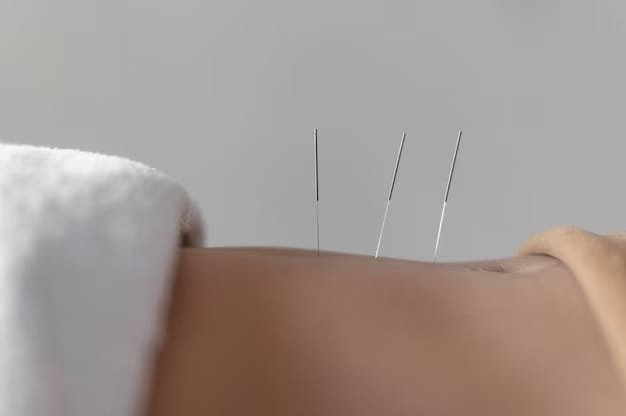Unlock pain relief with trigger point dry needling. A revolutionary technique for pain management. Say goodbye to chronic pain!
Trigger Point Dry Needling is a therapeutic technique that involves inserting thin needles into specific muscle knots to relieve pain and improve function by releasing tension and promoting healing. Click the link for more information: https://equilhealth.com/services/dry-needling/
Understanding Pain Management
Definition and importance of pain management
Pain management involves strategies and treatments to alleviate or control pain, significantly enhancing quality of life. Its importance lies in promoting recovery, improving well-being, and enabling individuals to participate fully in daily activities.
Common pain management techniques
Common pain management techniques include medications, physical therapy, acupuncture, massage, cognitive-behavioral therapy, relaxation strategies, and lifestyle modifications. These approaches aim to alleviate discomfort and enhance overall well-being in individuals.
Limitations of traditional pain management
Traditional pain management often faces challenges, including side effects from medications, limited effectiveness for chronic conditions, dependency risks, and insufficient individualized approaches, leading to ongoing patient discomfort and dissatisfaction.
Exploration of Trigger Point Dry Needling
Detailed explanation of Trigger Point Dry Needling
Trigger Point Dry Needling involves inserting thin needles into specific muscle knots to relieve pain and improve function. This technique targets trigger points, enhancing blood flow and promoting tissue healing effectively.
Origin and development of the technique
The technique’s origins trace back to initial experimentation, evolving through innovative practices and refined methods over time. This progression reflects the influence of various cultures in shaping its current form.
How it differs from other pain management techniques
This approach distinguishes itself from traditional pain management methods by focusing on holistic strategies, patient-specific interventions, and integrating mental wellness practices, rather than relying solely on medication or invasive procedures.
The Science behind Trigger Point Dry Needling
Explanation of the physiological process involved
The physiological process involves a series of bodily functions, including cellular mechanisms, hormonal regulation, and neural interactions that together maintain homeostasis and enable adaptation to various internal and external stimuli.
What happens during a Dry Needling session
During a Dry Needling session, fine needles are inserted into trigger points within muscles to alleviate pain and reduce tension. This technique promotes healing and improves mobility through muscle activation.
Addressing triggers points and their role in pain
Trigger points are localized muscle contractions that can cause pain and discomfort. Addressing these areas through various treatments can help alleviate tension, ultimately improving overall well-being and enhancing mobility.
Benefits of Trigger Point Dry Needling
Pain relief and management
Effective pain relief and management involve various strategies, including medications, physical therapies, psychological support, and lifestyle changes. Tailoring approaches to individual needs is crucial for optimal outcomes in alleviating discomfort.
Enhanced muscle function
Improved muscle performance involves the optimization of strength, endurance, and coordination. Techniques like targeted exercises, proper nutrition, and recovery strategies contribute significantly to achieving better overall muscular efficiency and functionality.
Improved mobility and flexibility
Enhanced mobility and flexibility significantly contribute to overall physical well-being, allowing individuals to move more freely. This improvement reduces the risk of injury and enhances performance in daily activities and sports.
Role in sports medicine
Sports medicine plays a crucial role in promoting athlete health, preventing injuries, enhancing performance, and facilitating rehabilitation. It combines medical expertise with physical training to support optimal physical function and recovery.
Possible Side Effects and Risks
Common side effects of the technique
The technique may lead to common side effects, which can include temporary discomfort, mild swelling, or slight bruising. These reactions are generally minor and resolve quickly without further intervention needed.
potential risks and contraindications
When considering medical treatments, it’s essential to evaluate possible risks and contraindications. These factors encompass adverse reactions or conditions that may hinder the safety and effectiveness of a recommended option.
Tips for minimizing side effects
To reduce side effects, stay hydrated, follow a balanced diet, communicate with your healthcare provider about concerns, adhere to prescribed dosages, and consider complementary therapies like relaxation techniques or exercise.
Case Studies and Success Stories
Real-life examples of successful pain management with dry needling
Numerous patients have experienced significant relief from chronic pain through dry needling. Effective outcomes have been reported in conditions like fibromyalgia, tension headaches, and sports injuries, showcasing its therapeutic benefits.
Input from medical professionals and specialists on treatment outcomes
Feedback from healthcare providers and specialists regarding treatment results is essential for assessing effectiveness, enhancing patient care, and refining methodologies. Their insights guide improvements in medical practices and promote better health outcomes.
